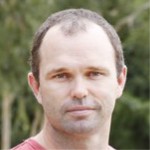Sub-catchment scale monitoring, modelling and extension design to support reef water quality improvement
Led by: Dr Aaron Davis, JCU
Project Summary
- Design of a pilot sub-catchment scale monitoring, modelling and extension program, based on end-user workshop, existing risk assessments, monitoring and modelling programs, for subsequent implementation with farmer’s support to identify reef pollutant “spikes/hotspots”, their causes and the necessary areas for extension to improve management.
- Pilot implementation to test the design with the assistance of farmers, extension providers, etc in a particular local area to underpin future initiatives such as nutrient trading.
- Subsequently, implementation, monitoring and evaluation of an extension program based on any refinements resulting from the pilot study findings.
- ¹Use of additional information from implementation as one line of evidence assisting in development and trialing of market based instruments.
¹Indicates outcomes of this project that will be subsequently implemented and funded by DEHP, etc. (and hence do not form any directly funded part of this proposal).
Problem Statements
Problem
The problem being addressed is the need for better spatial and extension targeting of management action change to reduce nutrient and pesticide runoff in cane areas in order to meet Reef Plan targets.
How Research Addresses Problem
By using the method described below, farmers and associated industry service providers (agrichemical re-sellers etc.) will have an evidence-based approach to motivate them to fix related management issues on their properties, with the support of the extension and science providers.
- Initial workshop prioritisation of sub-catchment scale ‘hotspots’ for improved nutrient and pesticide management intervention within GBR canegrowing districts.
- Design of a sub-catchment scale monitoring and modeling program for high priority sub-catchment hotspots to identify reef pollutant “spikes or hotspots”, track back their causes with extension providers and farmers and, with them, identify the necessary areas for improvement in on-farm management.
- Engagement with extension providers, industry and EHP policy officers to identify information and communication pathways to influence on-ground decisions eliciting practice change
- Test the design with a pilot program in two high priority areas (i.e., potentially pesticide management in lower Burdekin or Mackay-Whitsunday, nutrients in the Wet Tropics).
- ²Refine the design and roll out a broader program in high priority reef sub-catchments.
²Sub-catchment scale is meant to take monitoring to a local sub-catchment where the group of farmers work collaboratively to identify and reduce their sub-catchments’ reef pollutant loads with assistance from this project’s outputs.
Project Keywords
Monitoring; Modelling; Policy instruments; Extension; Market based instruments.
Project Funding
This project is jointly funded through JCU, DNRM, DEHP, DSITIA and the Australian Government’s National Environmental Science Programme.


